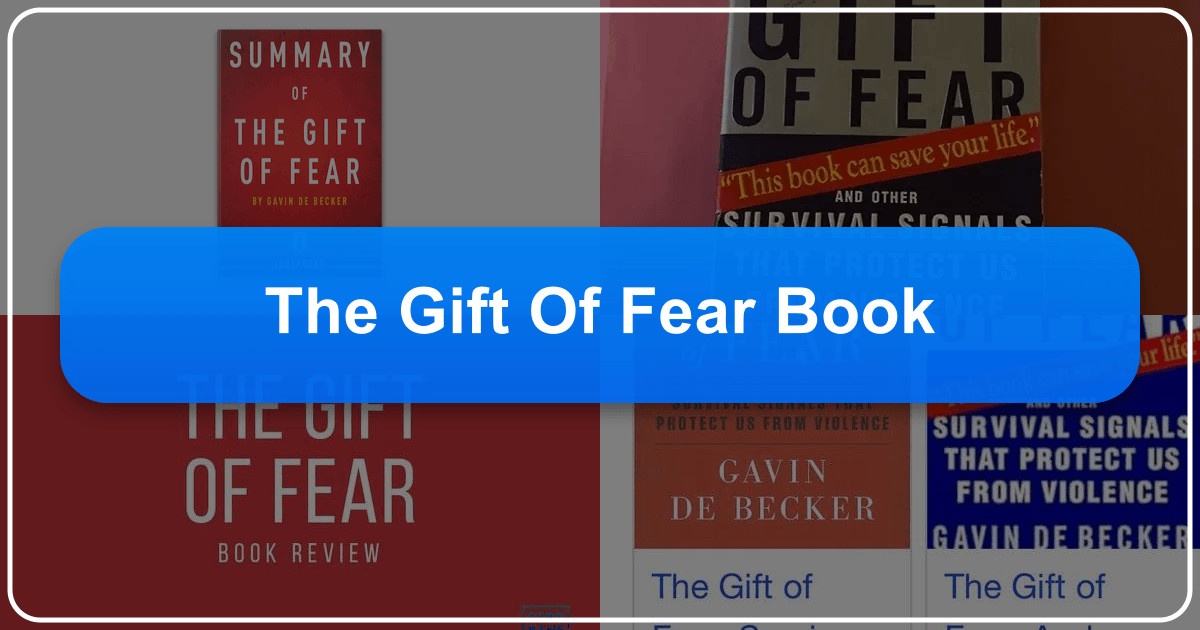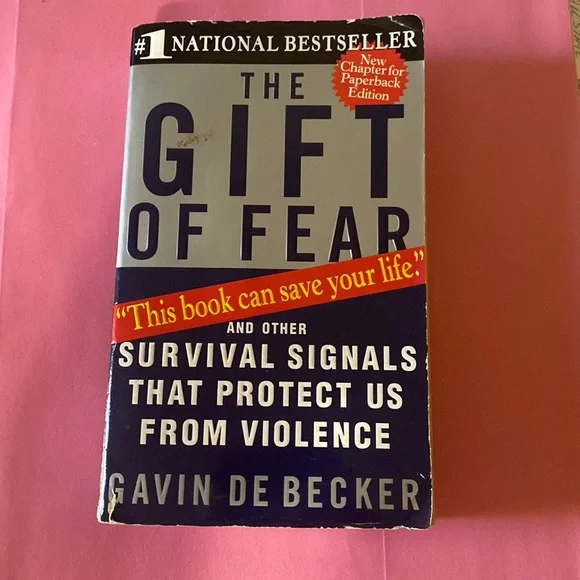The Gift of Fear: A Deep Dive into Intuition and Self-Protection

Gavin de Becker’s “The Gift of Fear: And Other Survival Signals That Protect Us from Violence” is more than just a self-help book; it’s a compelling exploration of human intuition and its crucial role in personal safety. Published in 1997, the book remains relevant today, offering timeless insights into recognizing and responding to potential threats. This article delves into the key themes of “The Gift of Fear,” examining its enduring impact across various aspects of our lives and its continued relevance in the modern world. We will explore the book’s content through the lenses of literary genres, authorial analysis, educational value, the role of libraries, and its overall cultural influence.

The Genre and Impact of “The Gift of Fear”
“The Gift of Fear” occupies a unique space in the self-help genre. While categorized as self-help, its approach goes beyond simple tips and tricks. De Becker masterfully blends elements of true crime, investigative journalism, and psychology to create a narrative that is both engaging and informative. The book isn’t just a list of dos and don’ts; it’s a story-driven exploration of human behavior, using real-life case studies to illustrate the principles of intuition and threat assessment. This unique blend of genres contributed to its widespread popularity and lasting impact. Its bestseller status, evident through its 16-week run on The New York Times Bestseller List, showcases its appeal to a broad audience seeking practical advice grounded in psychological insights. The book’s enduring popularity is reflected in its continuous presence in libraries and online, demonstrating its sustained relevance and impact across generations of readers. Beyond its commercial success, “The Gift of Fear” has a discernible impact on the way we understand and approach personal safety, influencing subsequent works and public discourse.

The Book as a Thriller
The book’s structure, employing numerous detailed case studies, keeps the reader engaged with suspenseful narratives. Each story becomes a micro-thriller, highlighting the subtle cues and pre-incident indicators (PINS) that often precede violent acts. De Becker expertly weaves together these narratives, creating a compelling read that reveals how seemingly innocuous situations can hold significant risks. This thriller-like approach transcends the typical self-help formula, making the potentially dry subject matter accessible and captivating for a wider readership.
The Educational Value of “The Gift of Fear”
Beyond its captivating narrative, “The Gift of Fear” offers significant educational value. The book’s core message—trusting one’s intuition—is presented not as a mystical ability but as a refined and powerful cognitive process honed by centuries of human experience. De Becker meticulously explains how our intuition, often dismissed as mere feelings, works by analyzing the patterns in our subconscious assessment of environmental cues. The book is rich with practical, actionable insights which empower readers to proactively assess risks and make informed choices about their safety. The detailed descriptions of pre-incident indicators are invaluable in helping people to recognize potential threats.

Life Lessons from De Becker’s Work
“The Gift of Fear” teaches us to trust our instincts and to understand that our gut reactions, often dismissed as mere feelings or anxieties, are frequently the most accurate signals. We learn the vital importance of recognizing subtle signs of danger, particularly those often overlooked in social interactions. The book challenges the notion that violence is unpredictable, demonstrating its inherent predictability through detailed case studies. It encourages readers to actively question seemingly harmless situations and to develop a healthier relationship with fear, viewing it not as a debilitating emotion but as a valuable tool for self-preservation.
Authorial Analysis: Understanding Gavin de Becker
Gavin de Becker is not just an author; he is a renowned security consultant whose expertise in threat assessment informs the content of his book. His experience working with high-profile individuals and government agencies lends immense credibility to his claims, enhancing the book’s impact and trustability. De Becker’s background allows him to provide insightful analysis of violent behavior, breaking down complex dynamics and providing readers with clear, actionable strategies.
De Becker’s Writing Style
De Becker employs a straightforward and engaging writing style that balances detailed case studies with accessible explanations of complex concepts. He masterfully intertwines personal anecdotes and professional experiences, making the material relatable and credible. His clear and concise writing style effectively conveys complex ideas without compromising on depth or detail. The integration of gripping narratives creates a compelling and highly readable experience.
De Becker’s Inspirations and Influences
De Becker’s work is undoubtedly shaped by his extensive experience in security and threat assessment, coupled with his personal experiences in childhood with violence and abuse. He draws upon real-life case studies and his professional insights to explain and expound upon the concepts he presents. This combination of experience and personal perspective shapes his work, and gives it a unique depth and emotional resonance. His approach avoids academic jargon, instead favouring clear and concise language designed to empower and inform the everyday reader.
The Role of Libraries and Archives
Libraries, both physical and digital, play a vital role in disseminating the knowledge contained within “The Gift of Fear.” They provide accessible avenues for readers to engage with the book, regardless of their socioeconomic background or geographical location. Public libraries make the book available to a broad population, increasing its reach among individuals who may not otherwise have access. Digital libraries further expand accessibility, allowing readers around the globe to access the content through online platforms.
Rare Books and Archival Significance
While not a rare book itself, “The Gift of Fear” holds a unique place in the libraries’ collections. As a significant and influential work within the self-help and personal safety genres, it represents a significant cultural artifact deserving of preservation and continued access. Its continued presence on library shelves underlines its ongoing relevance and provides a record of its lasting cultural and societal impact.
Cultural Impact and Literary Influence
“The Gift of Fear” has had a considerable cultural impact since its publication. The book’s central message—trusting intuition—has entered mainstream consciousness, influencing how we perceive personal safety and risk assessment. Its continued popularity and discussions across various media highlight its significant influence on contemporary discussions about violence, intuition, and personal safety. De Becker’s work has influenced subsequent books and articles focused on self-protection and threat assessment.
Awards and Recognition
The book’s commercial success, underscored by its prominent placement on bestseller lists and its continued presence in libraries worldwide, stands as a testament to its cultural impact and literary merit. While it may not have received specific literary awards, its widespread influence and enduring relevance mark it as a significant work within its genre.
Adaptations and Communities
While no direct adaptations (such as film or television) have been formally produced, the book’s themes resonate widely, shaping discussions and influencing personal practices. Online communities, book clubs, and countless articles referencing the book demonstrate its persistent cultural relevance. The book’s enduring presence in discussions about personal safety and risk management solidifies its place within contemporary culture.
In conclusion, Gavin de Becker’s “The Gift of Fear” transcends the limitations of a typical self-help book. Its integration of true crime narratives, psychological insights, and practical advice has resonated with readers for over two decades, influencing public discourse on personal safety and empowering individuals to trust their intuition. The book’s enduring presence in libraries, continued discussion in online and physical communities, and its impact on broader societal discussions of violence firmly establish its significance as a vital work that remains relevant and impactful in the modern world.